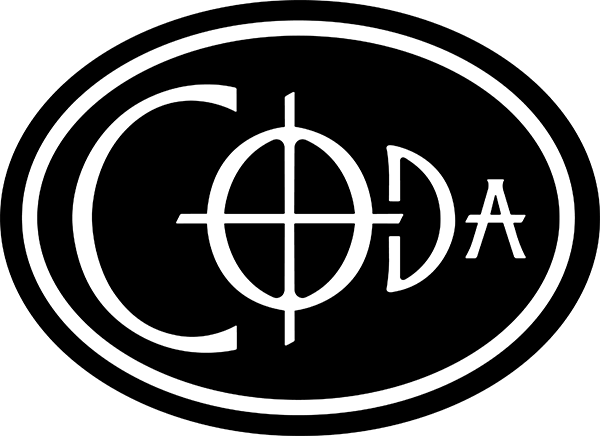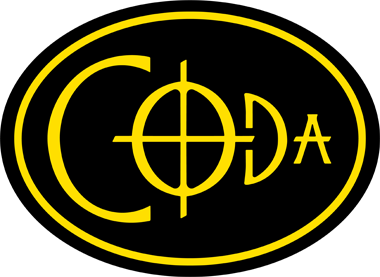Fingering Charts for the Visually Impaired
If you haven’t already, please listen to The Tactile Tour of Coda and the Simple Code for Understanding the Fingering Charts before you check out these fingering charts.
A few preliminary words. Coda is a key of C instrument that plays two chromatic octaves, from C5 to C7. An octave in the key of C is C, D, E, F, G, A, B, C, and chromatic just means that Coda plays all the sharps and flats. That means that Coda’s basic scale is a C scale, but you can play in other keys also because Coda can play sharps and flats.
Coda has three C notes: a low C, a mid C, and a high C, so here’s how we’ll name the notes to avoid confusion. The low notes are from low C up to, but not including, mid C. The mid notes are from mid C up to, but not including, high C. So, there are low notes (C, D, E, F, G, A, B), mid notes (C, D, E, F, G, A, B), and one high note (high C). You can also play one or two sub-low notes on Coda, but I’ll discuss that later.
First I’ll teach you the notes on the C scale. Then I’ll teach you the sharps and flats. By the way, one cool thing about Coda is that you can use exactly the same fingering to play from low C to mid C as you do to play from mid C to high C. Again, you can use exactly the same fingering to play from low C to mid C as you do to play from mid C to high C. The only difference is which side of the mouthpiece you blow into: Left is Lower; Right is Upper.
However, there are three notes that you can play in two ways, either on the lower chamber or the upper chamber. Those notes are low B, mid C, and mid D. (Also mid C sharp/D flat.) This can be a little confusing at first, but it’s fantastic once you become a bit more accomplished because it allows you to play challenging music in a more fluid manner.
So here, at last, we go with the fingering chart. You’ll soon notice the linear fingering pattern. Here’s how you play…
Low C: LM, L123, R1234, BT
Low D: LM, L123, R123, BT
Low E: LM, L123, R12, BT
Low F: LM, L123, R1, BT
Low G: LM, L123, BT
Low A: LM, L12, BT
Low B: LM, L1, BT or RM, L1234, R1234, BT
Mid C: LM, BT or RM, L123, R1234, BT
Mid D: LM, RT or RM, L123, R123, BT
Mid E: RM, L123, R12, BT
Mid F: RM, L123, R1, BT
Mid G: RM, L123, BT
Mid A: RM, L12, BT
Mid B: RM, L1, BT
High C: RM, BT
Now for the sharps and flats. Here’s a reminder that a C sharp is the same note as a D flat. A D sharp is the same as an E flat, etc.
Low C sharp or D flat: Like low C, but uncover the right thumb hole, so… LM, L123, R1234, LT
Low D sharp or E flat: LM, L123, R134, BT
Low F sharp or G flat: LM, L123, R3, BT
Low G sharp or A flat: LM, L12, R23, BT
Low A sharp or B flat: LM, L1, R23, BT
Mid C sharp or D flat: LM, L1, RT or, on the upper chamber, RM, L1234, R123, BT
Mid D sharp or E flat: RM, L123, R124, BT
Mid F sharp or G flat: RM, L123, R2, BT
Mid G sharp or A flat: RM, L12, R3, BT
Mid A sharp or B flat: RM, L1, R23, BT
There are alternate fingerings for some of the sharps and flats, but don’t worry about those at first.
Now, expect it to take some time to get used to covering the tone holes completely. Don’t get frustrated. That’s normal at first, but it will get easier and easier with time.
And expect it to feel strange switching from one blowing entrance to the other, but that also becomes more and more fluid and automatic with time.




